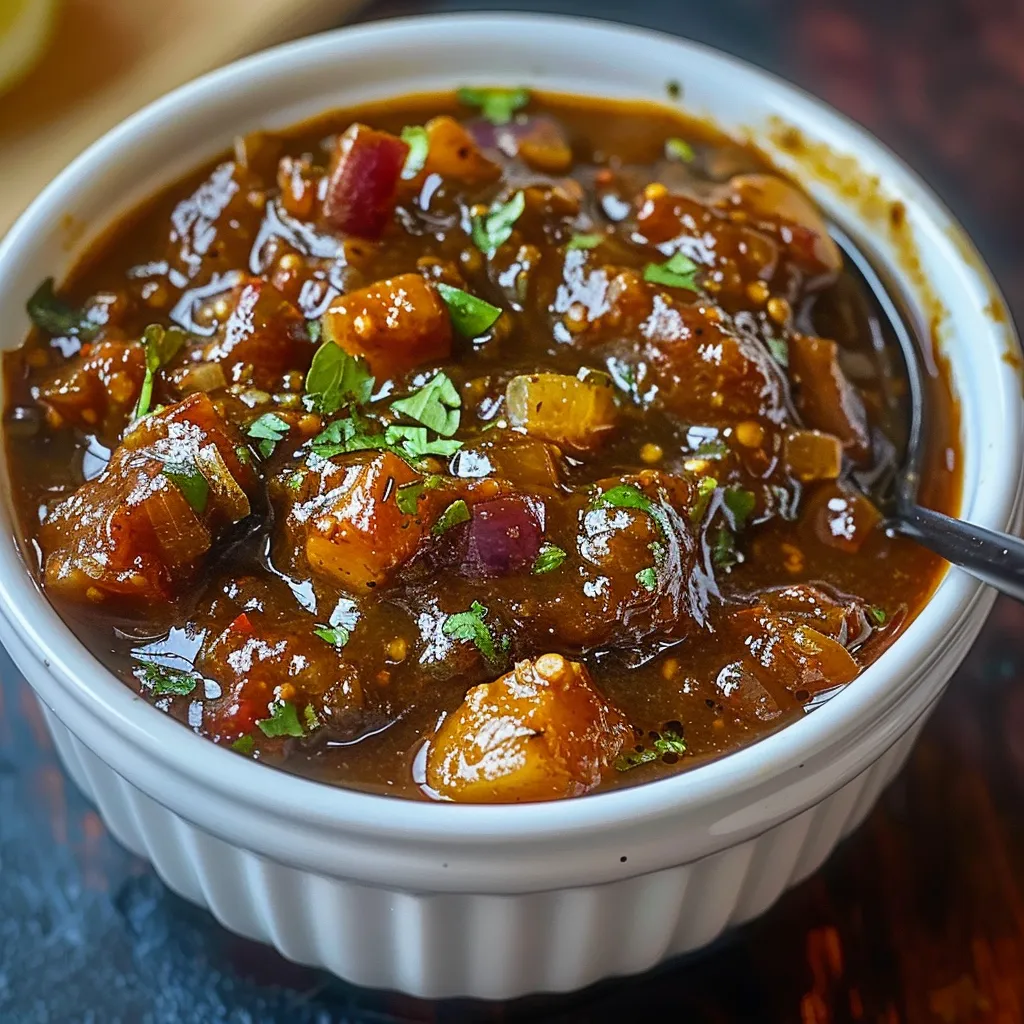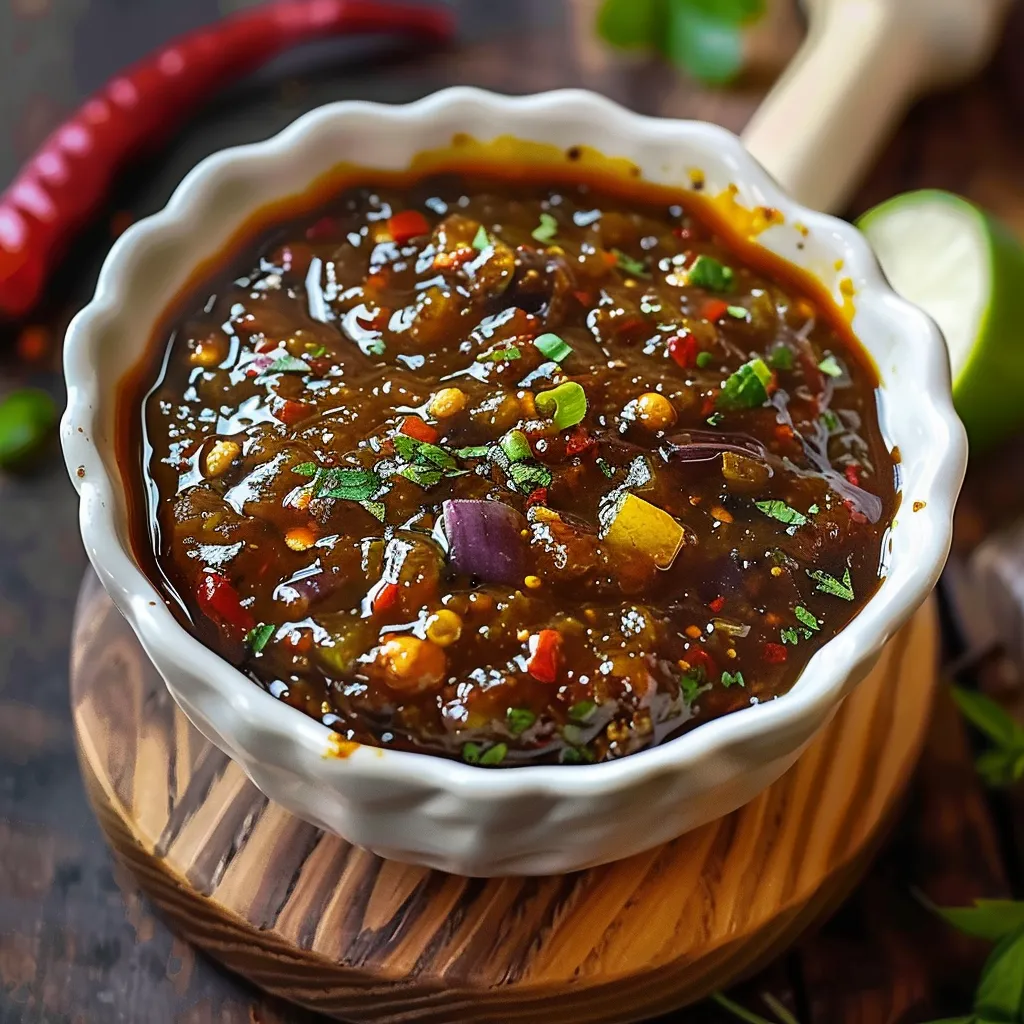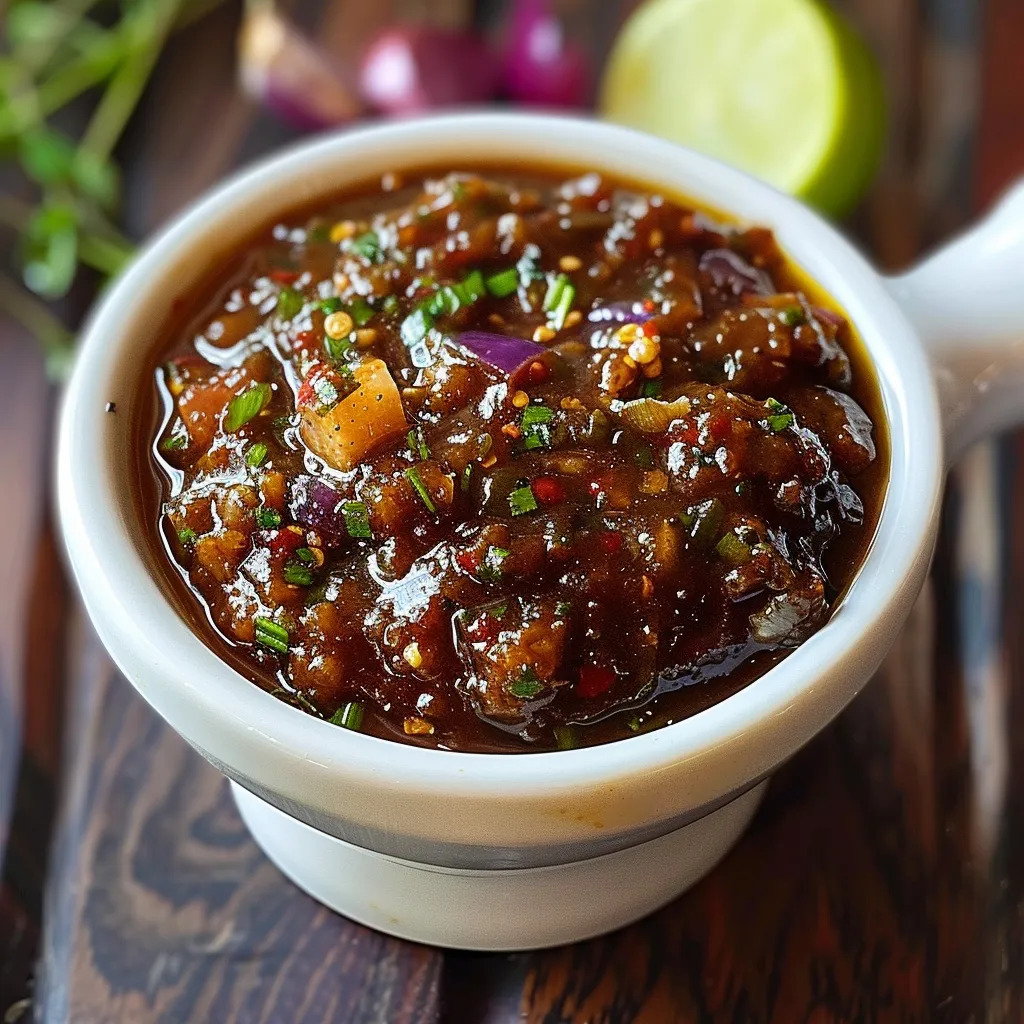 Pin it
Pin it
This vibrant Jamaican jerk sauce transforms ordinary dishes into bold Caribbean feasts with its perfect balance of heat, sweet, and tangy flavors. The authentic blend of scotch bonnets, allspice, and aromatics creates that unmistakable jerk character that makes Jamaican cuisine so beloved worldwide.
I first learned this recipe while visiting Montego Bay from a local chef who insisted the secret was balancing the heat with enough sweetness. When I make this at home now, the aroma alone transports me back to those beachside jerk shacks where the sauce was always homemade and fiery.
Ingredients
- Scotch bonnet peppers: These fiery peppers are essential for authentic jerk flavor. Look for bright-colored ones with smooth skin.
- Red onion: Adds sweetness and body. Choose one that feels heavy for its size.
- Fresh garlic: Provides pungent depth. Select firm cloves without green sprouts.
- Scallions: Offer a milder onion flavor with herbaceous notes. Pick ones with bright green tops.
- White vinegar: Balances the heat with acidity. Use distilled for clean flavor.
- Soy sauce: Contributes umami and saltiness. Opt for naturally brewed varieties.
- Ginger: Adds warming spice and complexity. Fresh is infinitely better than powdered.
- Pimento seeds: Also called allspice, this quintessential Jamaican spice gives jerk its signature flavor.
- Brown sugar: Tames the heat with necessary sweetness. Dark brown adds more molasses notes.
- Nutmeg: Complements the pimento with warm aromatic notes. Always grate fresh for best flavor.
- Fresh thyme: Provides herbal brightness and authenticity. Use fresh rather than dried.
- Lime juice: Adds citrus brightness and helps preserve the sauce. Use fresh, not bottled.
 Pin it
Pin it
Step-by-Step Instructions
- Prepare the peppers:
- Handle scotch bonnets with extreme care, preferably with gloves. Cut off stems and roughly chop them. For a milder sauce, remove seeds and membranes, but for authentic heat, keep them intact. Remember that these are among the hottest peppers in the world, so wash hands thoroughly after handling.
- Prep the aromatics:
- Roughly chop the onion, garlic, and scallions. No need for perfect pieces, as everything will be blended. Strip thyme leaves from stems by pulling against the grain of the stem. Crush pimento seeds slightly in a mortar and pestle or with the flat side of a knife to release their essential oils.
- Blend everything:
- Add all ingredients to your blender or food processor. Begin with short pulses to break down larger pieces, then blend continuously until smooth, about 2 minutes. Stop occasionally to scrape down sides for even blending. The texture should be slightly coarse rather than completely smooth for authentic character.
- Adjust texture and flavor:
- Check consistency and add water tablespoon by tablespoon if needed. The sauce should be thick enough to coat a spoon but pourable. Taste carefully and adjust seasonings. Remember that flavors will develop further as the sauce rests.
- Rest and store:
- Transfer to a clean glass jar and let sit at room temperature for at least 2 hours before using to allow flavors to meld. For best results, refrigerate overnight before first use. This patience will be rewarded with superior flavor development.
The pimento seeds or allspice are my favorite ingredient in this recipe. Despite the name, allspice is actually a single spice native to Jamaica that tastes like a combination of cinnamon, cloves, and nutmeg. My Jamaican friend taught me that toasting the seeds lightly before crushing them intensifies their flavor dramatically, making the sauce even more authentic.
Traditional Uses
In Jamaica, jerk sauce is primarily used as a marinade for meats, especially chicken and pork. The traditional method involves marinating meat overnight, then slow cooking it over pimento wood. The sauce penetrates deeply, creating that signature blackened exterior while keeping the interior moist and flavorful. At home, you can achieve similar results by marinating meat for at least 4 hours before grilling or roasting.
Heat Management
Authentic jerk sauce is notoriously spicy, but you can easily adjust the heat level to suit your preferences. Using fewer scotch bonnets or substituting with milder habaneros creates a more approachable sauce. The sweetness from brown sugar and the acidity from vinegar and lime help balance the heat naturally. For a truly mild version, remove all seeds and membranes from the peppers and increase the brown sugar slightly.
Storage Information
This sauce improves with age over the first few days as flavors meld together. Store in an airtight glass container in the refrigerator, where it will keep for up to 3 weeks. For longer storage, freeze in small portions. Ice cube trays work perfectly, allowing you to thaw only what you need. Once frozen, transfer the cubes to freezer bags, where they'll keep for up to 3 months. Bring to room temperature before using for best flavor.
Serving Beyond Meats
While traditionally used for chicken and pork, jerk sauce makes an incredible addition to plant-based dishes too. Try marinating firm tofu or tempeh before grilling or roasting. Toss a tablespoon with roasted vegetables for Caribbean flair. Mix with mayonnaise for a spicy sandwich spread or add to hummus for a kicked-up dip. Even a small amount stirred into soups, stews, or bean dishes adds remarkable depth of flavor.
 Pin it
Pin it
Frequently Asked Questions
- → Is Jamaican Jerk Sauce very spicy?
- Yes, it’s spicy from the scotch bonnets, but you can adjust the heat by using fewer peppers.
- → What’s the best way to use jerk sauce?
- It’s great as a marinade for meats, a glaze for grilling, or a dipping sauce.
- → Can I freeze jerk sauce?
- Yes, it freezes well and can last up to 3 months in the freezer.
- → How long will it last in the fridge?
- Stored properly in a jar, it lasts up to 3 weeks refrigerated.
- → Can I make it less spicy?
- Yes, remove seeds from the peppers or use fewer scotch bonnets for a milder version.
